Last updated on April 4, 2024
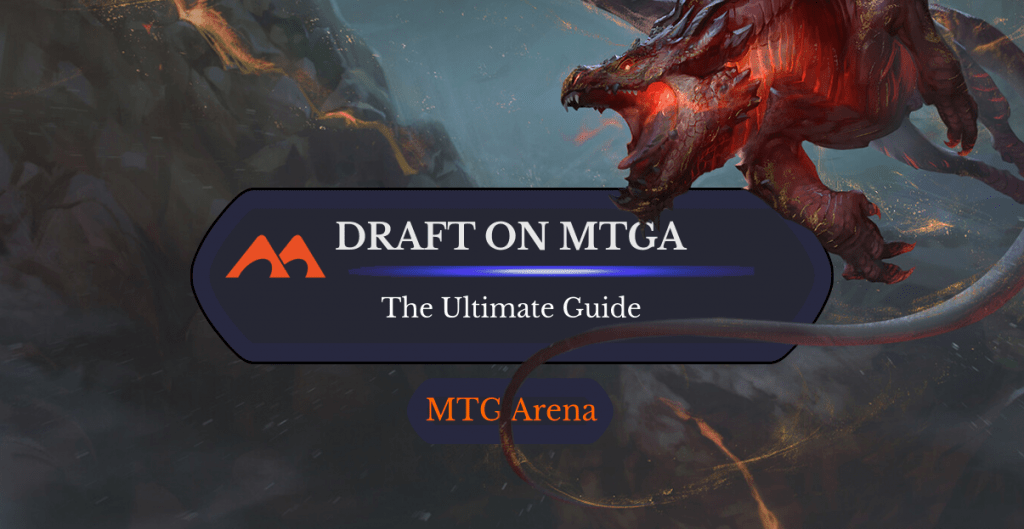
Backdraft Hellkite | Illustration by Rudy Siswanto
We love to draft. It’s in our name, after all! We want to share everything we know about how to draft on Arena. Be sure to bookmark this page so that you can come back if you need to!
We cover everything, from what Limited and drafting are, to tips on how to build a Draft deck on Arena, to our own personal tricks and sources. You'll learn how to use our MTG Arena helper, Arena Tutor, to get better at draft.
This guide gives you a strong foothold and jumping-off point to become a better drafter on MTG Arena and a better player overall. Let’s open pack one!
What is Drafting?
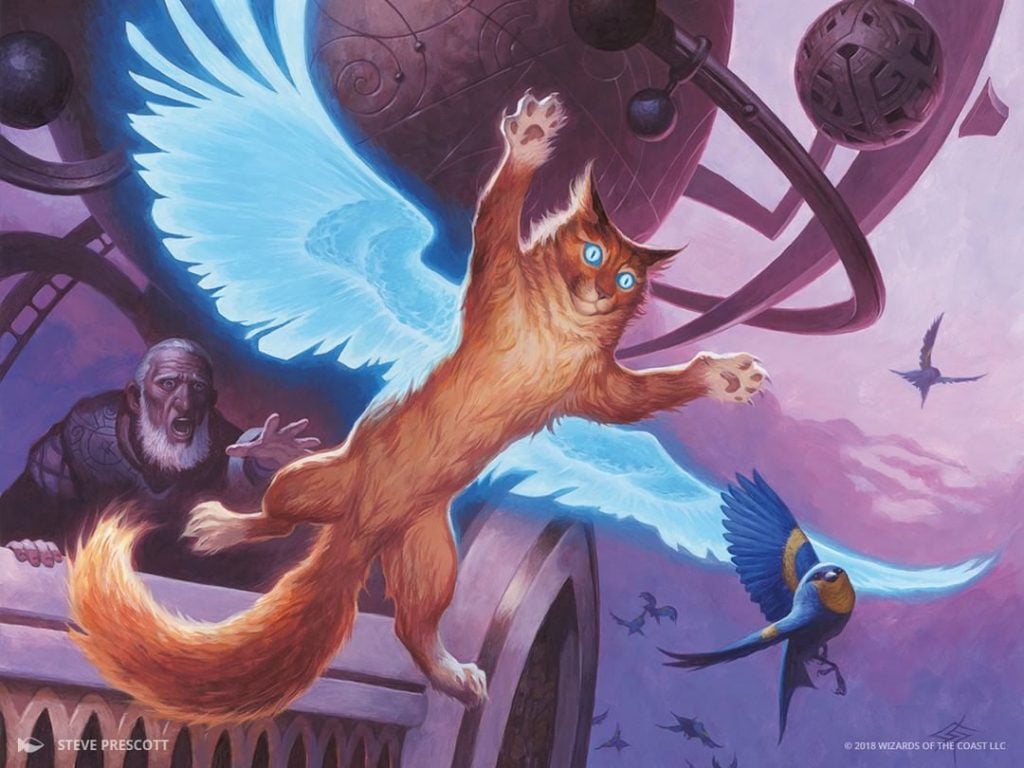
Arcane Flight | Illustration by Steve Prescott
Drafting is a part of a format called “Limited” that has the following structure:
- You don't decide what your deck looks like until you sit down to play; the contents of your deck are decided only by the contents of the packs you'll be using.
- Your deck can be no less than 40 cards. You can build a deck with more than 40 cards if you really want to.
- Your sideboard consists of anything else you have opened (in Sealed) or drafted (in Draft).
- With the exception of higher-level tournaments, you're free to reconstruct your deck between matches as you wish using any cards you have opened/drafted for that event.
- You may play any number of cards that you've opened or drafted: there is no “4-of” restriction in Limited play, so you can play as many of a single card as you want!
- Basic lands are provided freely during deck construction. As a rule of thumb, never draft a basic land with no other special types or effects. There's no reason to!
Three Primary Ways to Play Limited
Sealed Deck
You get six booster packs to build a (minimum) 40-card deck from. You open and keep all cards in those packs, which become your “pool.” Any number of players can participate in a Sealed deck event and there's a lot of variance depending on how lucky you are.
The deck builder on MTG Arena, however, can oftentimes be somewhat tedious to work with, as it can be difficult to see all of your cards or get an idea of what's open versus what isn't. If you play a lot of Sealed, or just hate the MTGA deck builder in general, give our Sealed deck builder a try! It'll be much easier to get a sense of things and put your decks together.
Booster Draft
We have a full breakdown of all the basics to drafting, so here's the summary:
Played with eight players in a “pod.” Each player is queued up and has a timer in order to ready up and start making picks.
All eight players follow this :
- Arena opens one pack and shows you draftable cards, a land may remain in the pack, no ad cards to remove here.
- Look at your pack and select one card from it. If the timer runs out, your selected card will be drafted. There's also an auto-selection that is probably not as smart as Arena Tutor, but will auto-draft something if you do not take action. It saves you from leaving your Arena draft and ending up with a bunch of duds.
- Arena takes care of passing the remaining cards to the person sitting to your left and bringing in the correct pack from your right. The pick timers get shorter the later it gets in the pack.
- Repeat the above two steps until there are no more cards left in the pack.
- Next, Arena opens your second pack. You can see and do some rearranging of your card pool, as time allows.
- Pick one card and pass the remaining cards, Arena takes care of passing the pack to the correct person.
- This continues, again, until all the cards have been picked, and the same with pack three (going left).
- Once the third pack has been drafted, your timer is off, and you can construct a deck of at least 40 cards at your leisure as long as the event is active.
Cube
A special Limited format where someone curates a large, usually singleton, custom draft format. The games are interesting, complicated, and often outright insane.
MTGA runs Cube events sporadically, much to hardcore limited fans' delight. Generally, there is the primary Cube, the “Historic Cube” and a supplemental combo-based one, the “Tinkerer's Cube.”
If you really love Cube, MTG Online (MTGA's much-maligned step-sibling) has Cube fairly regularly.
MTG Arena Limited Play Modes and Rewards
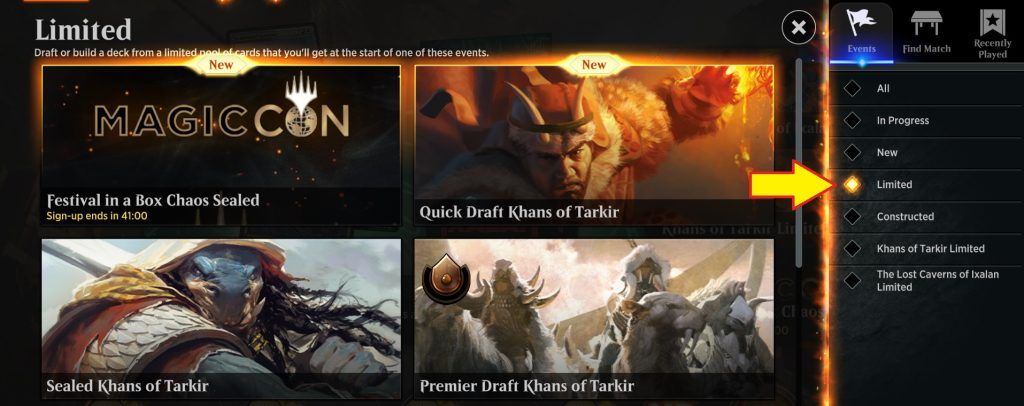
Sealed and Draft are constantly available on MTG Arena. The Limited play modes are found under Events. Sealed is simple since you open six packs, build your deck and play. Each of the three Arena draft modes differs slightly from real-life play, in which you pass left, right, and left again, and have to pull out the token/ad/art card. Arena makes sure your packs don't get mixed up, and your opponents are also not in the same draft pod so don't put any stock in hate-drafting.
You can toggle between events, finding single matches and your recently played modes in the top right as pictured above. Check out our events calendar to see what you can join and what's coming up.
Sealed
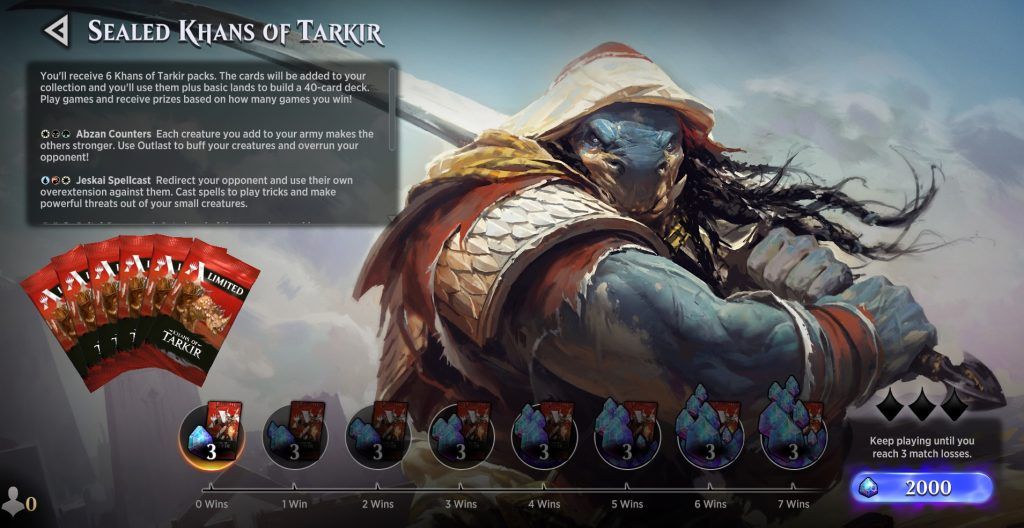
- Unranked Best-of-One matches (BO1) with humans
- Cost: 2,000 gems
- Play until you reach 7 wins or 3 losses
For Sealed BO1, your rewards are as follows:
- 0 wins: 200 gems + 3 packs
- 1 win: 400 gems + 3 packs
- 2 wins: 600 gems + 3 packs
- 3 wins: 1,200 gems + 3 packs
- 4 wins: 1,400 gems + 3 packs
- 5 wins: 1,600 gems + 3 packs
- 6 wins: 2,000 gems + 3 packs
- 7 wins: 2,200 gems + 3 packs
Premier Draft
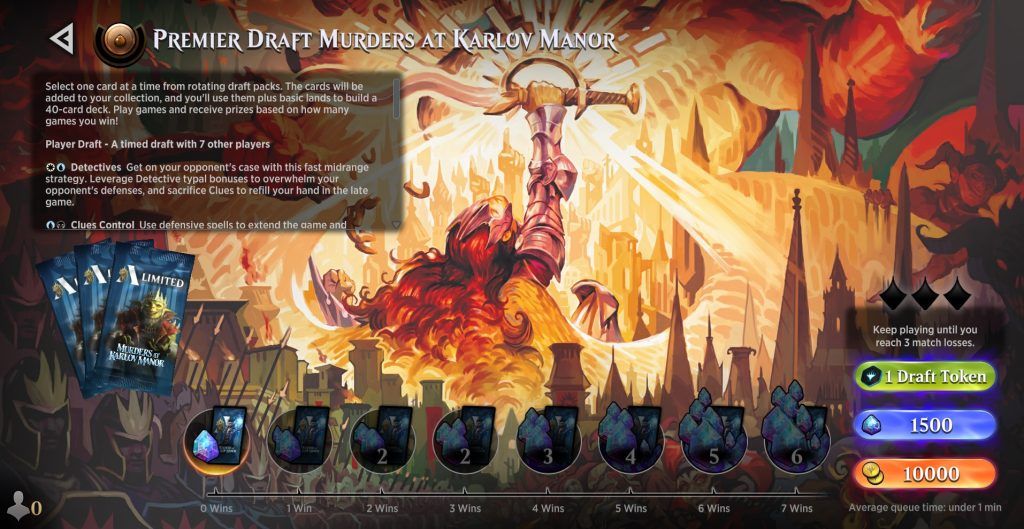
- Ranked Best-of-One matches (BO1) with humans
- Cost: 1,500 gems or 10,000 gold
- Play until you reach 7 wins or 3 losses
Premier Draft gives you the following rewards based on wins:

- 0 wins: 50 gems + 1 pack
- 1 win: 100 gems + 1 pack
- 2 wins: 250 gems + 2 packs
- 3 wins: 1,000 gems + 2 packs
- 4 wins: 1,400 gems + 3 packs
- 5 wins: 1,600 gems + 4 packs
- 6 wins: 1,800 gems + 5 packs
- 7 wins: 2,200 gems + 6 packs
Traditional Draft
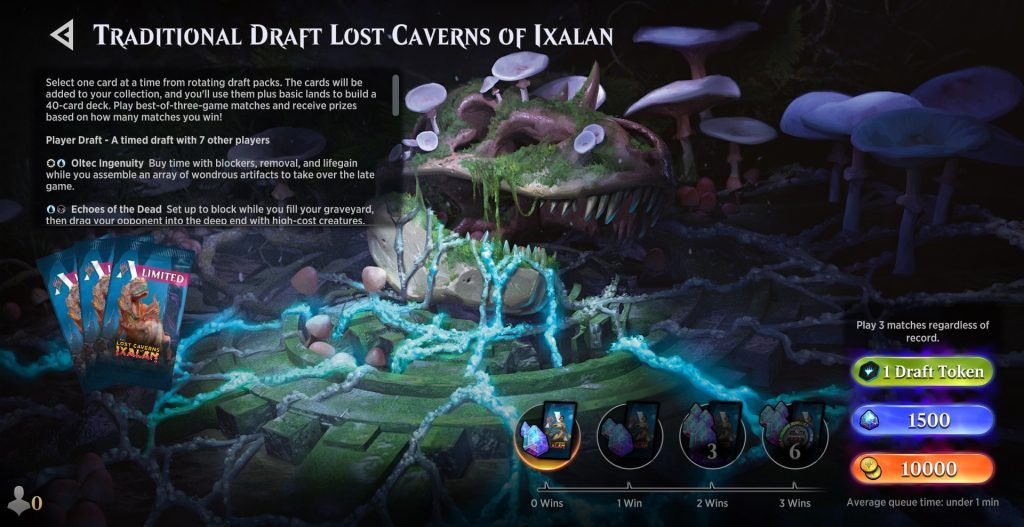
- Unranked Best-of-Three matches (BO3) with humans
- Cost: 1,500 gems or 10,000 gold
- Play three matches, regardless of wins/losses
For Traditional Draft, your rewards are as follows:
- 0 wins: 100 gems + 1 pack
- 1 win: 250 gems + 1 pack
- 2 wins: 1,000 gems + 3 packs
- 3 wins: 2,500 gems + 6 packs + 2 Play-In points
Quick Draft
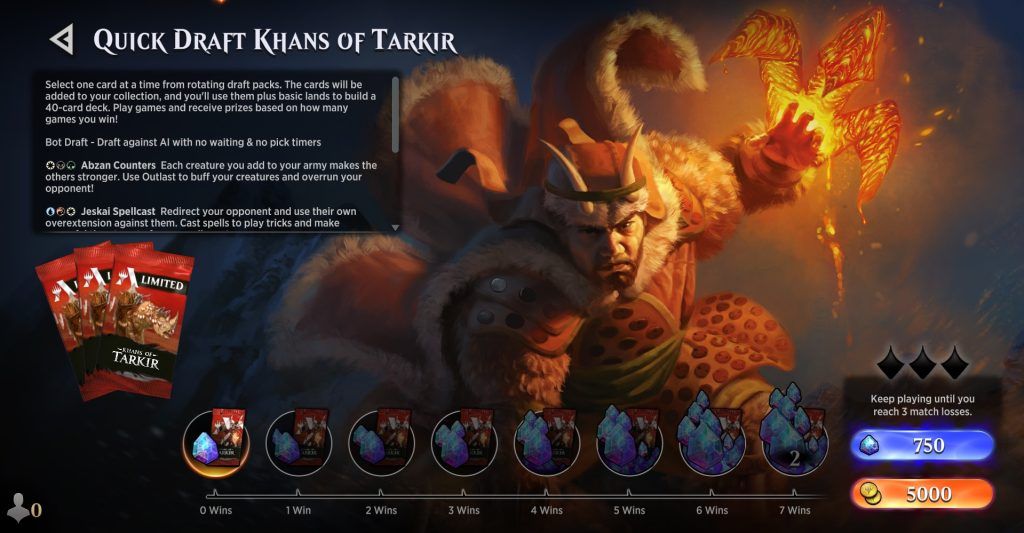
- Draft with bots and without timers
- Ranked Best-of-One matches (BO1) against humans
- Cost: 750 gems or 5,000 gold
- Play until you reach 7 wins or 3 losses
For Quick Draft, the winnings are set up like this:

- 0 wins: 50 gems + 1.2 packs
- 1 win: 100 gems + 1.22 packs
- 2 wins: 200 gems + 1.24 packs
- 3 wins: 300 gems + 1.26 packs
- 4 wins: 450 gems + 1.30 packs
- 5 wins: 650 gems + 1.35 packs
- 6 wins: 850 gems + 1.40 packs
- 7 wins: 950 gems + 2 packs
As you can see, there are 1.X fractions of packs for the quick draft. What this means is that you get one pack just for playing, regardless of your record. You also have a small chance at randomly getting a second pack, which improves with each match you win, but you’re not guaranteed a second pack until you’ve reached 7 match wins.
Premier Draft vs. Traditional Draft
This one is a matter of preference. While the draft itself (with humans) can take slightly more time, you're looking at up to nine total games with both drafts.
If you care about ranked play, then you have no choice but to play Premier Draft. If you're a newer player and want to play an “easier” mode where you don't have to worry about sideboarding, or if you want to play against more different decks, go with Premier Draft.
If you're more experienced and want a deeper Magic experience, go with Traditional Draft. Being an older player I may be biased, but Traditional Draft is “real Magic.” The sets are designed with sideboarding in mind, and you get to have a much better battle of wits with your opponent over three games. Plus, best of 3 mathematically has less variance than best of 1.
If you're not very familiar with sideboarding and want to become an expert, I recommend this course by Hall-of-Famer Seth Manfield.
Quick Draft vs. Premier Draft
Choosing to play Quick vs. Premier Draft depends on two things: your preference of draft experience and the set available to Draft.
For draft purists who want the highest level of draft experience, Quick Draft is not the answer.
If you're new to drafting or do not want the time limits of drafting with other players, then Quick Draft is a better fit. You can spend more time looking at Arena Tutor‘s rankings during the draft as well 🙂
Conversely, if you're in a hurry, Quick Draft could be faster. You don't have to wait for the Draft pod to fill up, and you can make all the picks as fast as you want to. Maybe I'm the slow one in the pod, but I rarely am waiting more than a few seconds for another player to make a draft pick.
After all, you still play the games against players, so it's a good strategy to find which set of cards is better for you.
Drafting Tips and Tricks
First, let's talk about what you want your 40-card deck to look like. There's a sweet spot for the ratio of creatures vs spells, the amount of lands in a deck, and for the mana values of your cards. We’ve got this handy a graph for you:
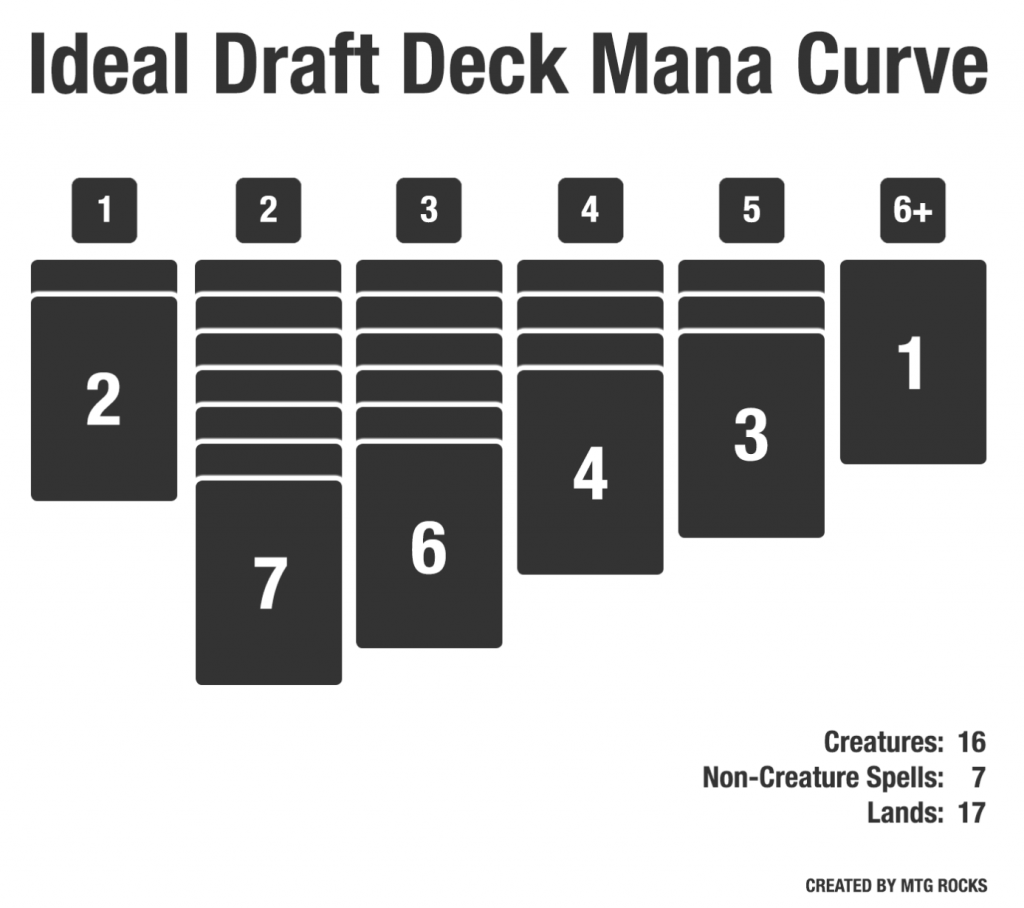
Your “mana curve,” or simply “curve,” is a depiction of your cards spread out in piles based on their CMC. A typical draft deck should have lots of 2-drops and 3-drops, with fewer and fewer cards on the outside of your curve. Of course, you can play around with it a bit as you become more familiar with the cards, but usually you’ll want your deck to end up looking something like this.
When you’re preparing for a draft, make sure to look over the set you’re going to be drafting. This will help you get familiar with the cards and what they do. Pay particularly close attention to the commons and uncommons in a set. These are the cards you will encounter the most, so knowing which ones to snap up and which ones to avoid beforehand will definitely pay off.
BREAD and Butter
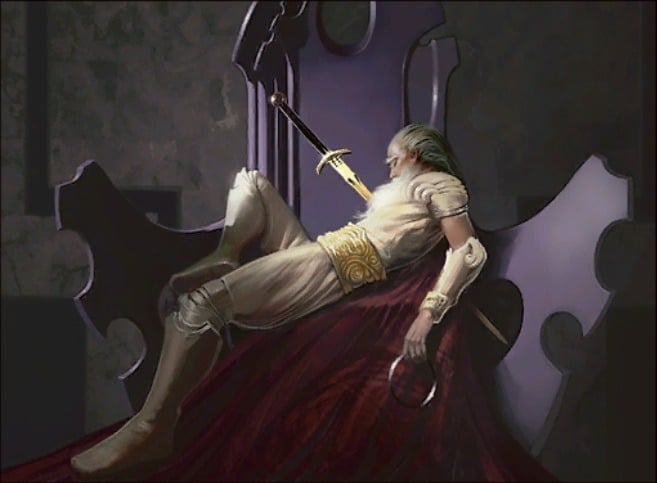
Murder | Illustration by Allen Williams
A great acronym to remember during a draft is BREAD, which stands for Bombs, Removal, Evasion, Aggro, and Duds/Dregs. While BREAD is a very blunt way to view drafting and has fallen somewhat out of favor as the years have gone by, it’s definitely a decent place for a newbie to begin learning how to evaluate cards. Remembering this acronym during your draft might help you make better decisions on what to pick and what not to. Here's a short and sweet explanation for each part:
- Bombs. These are cards that have to be answered by your opponent. If not, you’ll quickly win the game. They are also cards you’ll want to prioritize picking in a draft. Think of cards like Vigor, Rune-Scarred Demon, and nearly any planeswalker (like this one Chandra, Awakened Inferno.
- Removal. Your opponents will probably be playing a lot of creatures, so having an answer to them is crucial. Cards like Murder, Abrade, Pacifism, Frost Lynx, and Rabid Bite will be your best friends when the time comes to deal with a creature. The key here is for removal to be efficient—i.e., cheap.
- Evasion. These are creatures that are hard to block and/or hard to deal with. Look for keywords such as flying, menace, unblockable, hexproof, double strike, etc. Here are a few examples: Invisible Stalker, Ascended Lawmage, and Ripscale Predator.
- Aggro. With this, think of cards that are literally beaters. They will often win quick and fast. Think of the following: Scampering Scorcher, Colossadactyl, and Centaur Courser.
- Duds/Dregs. These are the cards that are usually picked last and are more likely than not going to end up in your deck because they rarely impact the game and are too situational. In this category are cards like Duress, Angel's Mercy, and Sorcerous Spyglass.
Things you also want to be on the lookout for are synergies between cards. Sets tend to have a few commons that work really well in several synergies and combos which can be the key to not only building your deck but also winning games.
BO1 Draft Strategies

Feather, the Redeemed | Illustration by Wayne Reynolds
With Quick Draft, you're only going to be playing one game in a match, so your picks have to be consistent with your deck's main strategy for those BO1 matches. There's no need to have a sideboard, so making picks based on that won’t get you very far as you’ll never have the opportunity to use them.
What you should be trying to build is a deck that can be the best it can be for that one game. This usually means you can leave cards like Duress and Tectonic Rift to the side. They'll more than likely have little impact on the game and are, more often than not, not useful enough often enough.
Also, cards that only work against specific colors like Devout Decree and Aether Gust have a slim chance of being useful. While the cheap costs and strong effects can be tempting, these are often just too narrow to be consistently effective. Of course, it can happen that you face an opponent with the right colors, but it's more likely these types of cards will rot away in your hand with you wishing you had something different to cast.
There are some exceptions to this rule: sometimes a particular format will have a strong enough showing of a certain kind of card that it can be worth it to put something you might otherwise sideboard in your main deck. With the prevalence of artifacts in The Lost Caverns of Ixalan, cards like Over the Edge and Deconstruction Hammer are more likely to come in handy.
You really need to have a good idea of what’s common enough in the format to deserve a slot in your deck, though, and occasionally these cards will still be a dead draw.
Instead, look for build-around cards like Dread Presence, Warden of Evos Isle, or cards with traits you know you'll use like removal and ramp (examples: Chandra's Outrage, or Leafkin Druid). These are cards that will almost always be useful from game to game.
You want to prioritize having cards that are strong in a wide variety of decks, something that becomes a little more nuanced when you’re doing a traditional draft.
BO3 Draft Strategies
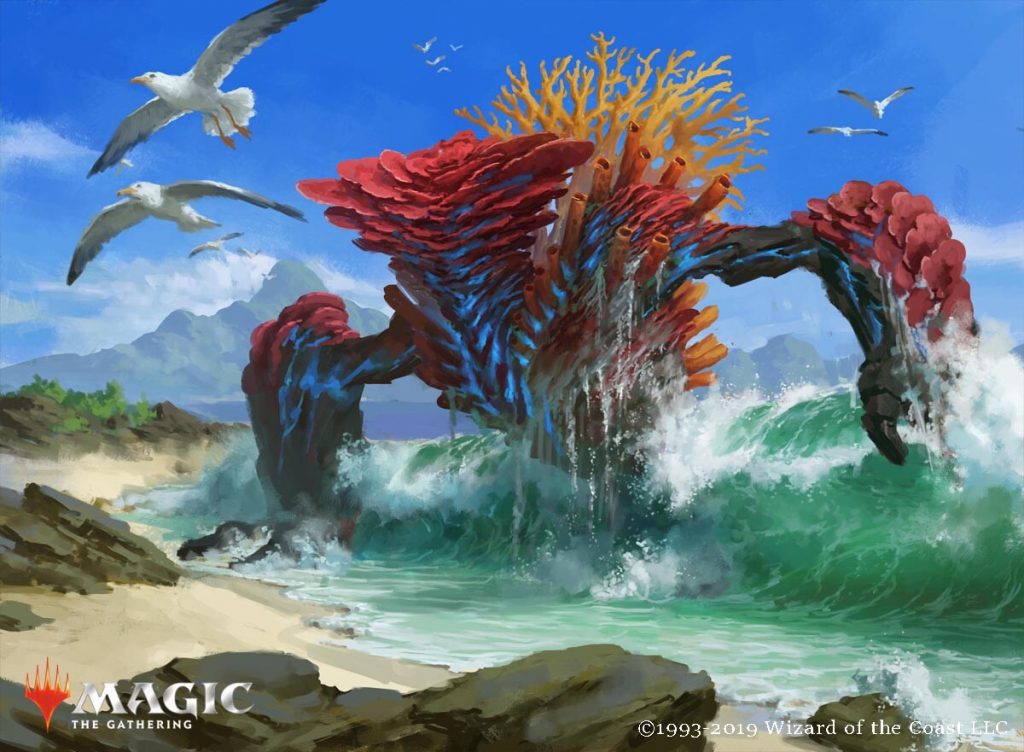
Risen Reef | Illustration by Johan Grenier
When you’re playing traditional draft, you have to think about picking cards for your sideboard along with building a great deck. You’ll be playing best-of-3 matches, so cards like Fry and Noxious Grasp become much more interesting. After game one, they can be just the push to tip the scales in your favor, because you’ll have the information of what the opponent is playing and can adjust your deck accordingly.
The same rules still apply for your main deck. You want a deck that is resilient and smooth. This means that cards like Dread Presence and Lavakin Brawler are still great picks as they have a lasting effect on the board and have to be dealt with one way or another. The difficulty becomes balancing your main deck and your sideboard. Sometimes you’ll have to let a great sideboard card slide in favor of a great card your main deck can really use. Or even the opposite!
As you can see, there are a lot of things to consider. A lot of it comes down to practice, and the ability to not give up or abandon your goals to get your grip on drafting. To help you along your path we’ll be giving you a few general tips right now.
How Time and Timers Matter on Arena
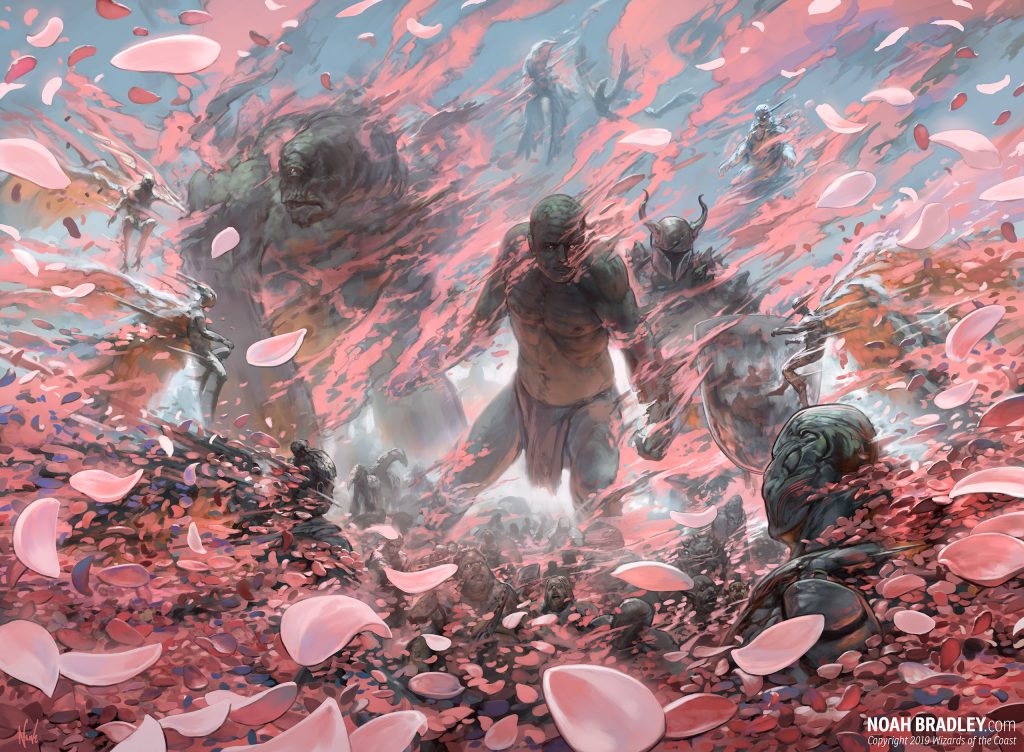
Winds of Abandon | Illustration by Noah Bradley
Another important thing to know about Arena is how they deal with time. Time for a draft, time in a match, and length of a match. Let’s start with drafting time. If you’ve drafted in real life or on MTGO, you probably know that there is a time limit (or, in paper, simple pressure) for you to make a pick. This can work a little differently on Arena.
On Quick Draft in Arena you draft against bots, just like on Draftsim. They have nowhere to go anyway, so there's no time limit. When you’re ready to make your pick, the bot will still be there waiting. This gives you a great opportunity to look through the cards you’ve picked, check for synergies, and weigh your options, so take advantage of it and take your time.
And if you're really stuck on a pick, you can always ask your friends or the Draftsim Discord for advice.
Within a BO1 match there is also no clock, as there is in MTGO, for instance. Instead, they work with an hourglass symbol that shows you how many ‘time-outs’ you have. We talk about this a bit in our reporting players article as well. When you make quick decisions in a game and pass quickly, you’re saving time, literally. You'll get more hourglasses and have more time to make decisions later when you might need it.
When you’re in a match and you're taking a long time, a line will appear in the middle of the playing field. This is one of those hourglass ‘time-outs’ that has started for you. It will keep appearing, even as you pass through phases, for as long as you do not make decisions quickly. Once you’ve made a certain amount of reasonably quick decisions, the line will disappear again.
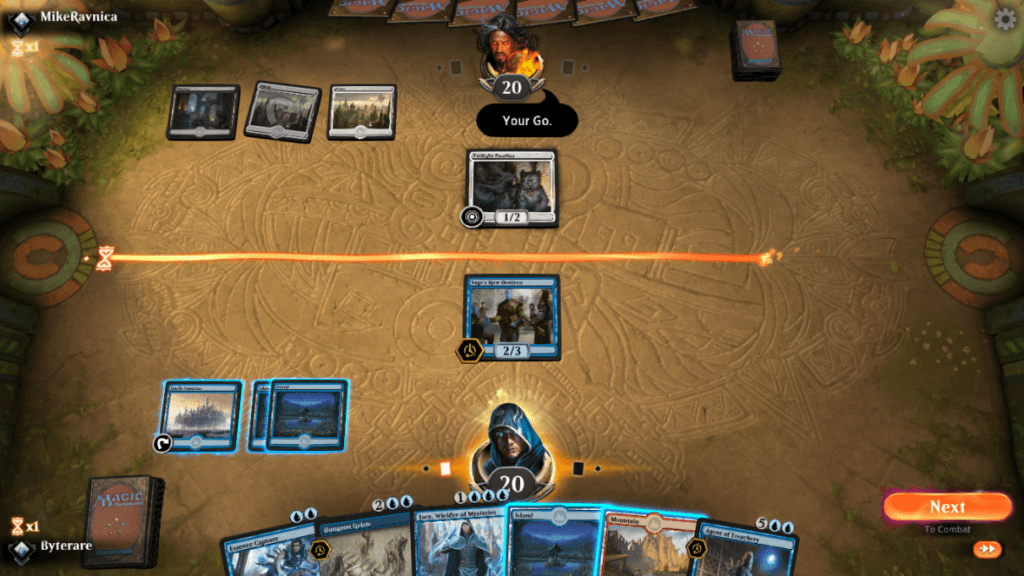
It looks like a fuse (or rope) that is slowly burning up from right to left. If you have more than one hourglass, you can use them all. But when you don’t have any left and it runs out, your turn will auto-pass to your opponent. If you do this again, you automatically concede the game.
As long as you make reasonable decisions and don’t take too long, you should have no trouble completing games. So there’s no need to worry, just play at a decent pace and don’t prolong the game unnecessarily.
Disconnecting During a Draft or a Match
If you happen to not feel like drafting, or disconnect during a draft, don’t worry. Arena remembers where you were in the draft or between matches and once you get back online it should start where you left off.
This isn’t the case during a match, though. If you happen to experience connectivity problems, you'll start using your time-outs. Once they’ve run out, you'll start auto-passing as mentioned above and eventually lose the game and/or match. So, as long as you are in-between matches, you're safe from anything happening to where you were. But disconnecting during a game does have repercussions e.g., you losing the game or match.
Arena Bots and How They Draft (Generally)

Door to Nothingness | Illustration by Svetlin Velinov
Bots generally draft certain colors or cards, the trick is figuring out what they will pass. With every set, this is a new puzzle.
Apply your knowledge of synergies and you'll tend to pick up on it before the bots. Keep an eye on Arena Tutor, and check the web for what people are posting to get a whiff of what both bots and humans alike are up to on Arena.
Is Drafting on Arena Worth It?
Your Arena drafts cost gems or gold, so here is a brief summary of how to best spend your in-game currency.
Gold
Gold is MTG Arena’s way of rewarding you for your achievements. These can be match wins, completing quests, or event prizes.
By collecting gold you can play Arena free of cost, as most drafts, booster packs, and other events can be paid for with gold.
Gems
Gems can be collected by buying them in the MTGA store, winning events, or opening redundant rares and mythic rares in the Vault.
Usually, you can consider 200 gems equal to 1,000 gold. Gems can get you all the things gold can get you plus certain gem-only events. In the case of Premier draft, the cost of 1,500 gems is a savings of 500 gems.
Farming Resources

Villainous Wealth | Illustration by Erica Yang
If you’re planning on collecting gold on Arena to pay for drafts, there's an optimal system to follow. The first four matches of each new day will get you the most gold, your rewards reduce quite quickly and become less efficient after that. Win four matches a day, complete one quest, and you will earn enough to draft about once or twice a week regardless of your event winnings.
Best Way to Use Gems in MTG Arena
Draft is our favorite way to use gems in Arena, and that could be just our bias. While you do receive gems for winning matches and events, they're definitely hard-earned. So, if you’re a player who wants to participate in more than just one or two drafts a week or any other gem-only events, you have the option to buy gems. Here's a peek at the current prices:

If you want a pro tip from us, we suggest buying the $99.99 pack of gems especially if you're planning on buying gems more often than not. It'll save you the most money in the long run, here’s a quick calculation:
At 750 gems: $0.00675 per gem ($4.99 / 750)
At 20,000 gems: $0.00499 per gem ($99.99 / 20,000)
If you buy the 20,000 pack, you save (20,000 / 750) x $4.99 – $99.99 = a little over $33.
With that information, we can compare it to the gem prices set for events on Arena. The first price will be the price when you buy 750 packs of gems. The second price will be the price when you buy the 20,000 pack of gems.
Traditional/Premier Draft: 1,500 gems (1,500 x $0.00675 and 1,500 x $0.00499) = $10.13 – $7.49. You save $2.64
Quick Draft: 750 gems (750 x $0.00675 and 750 x $0.00499) = $5.06 – $3.74. You save $1.32
Sealed: 2,000 gems (2,000 x $0.00675 and 2,000 x $0.00499) = $13.50 – $9.98. You save $3.52
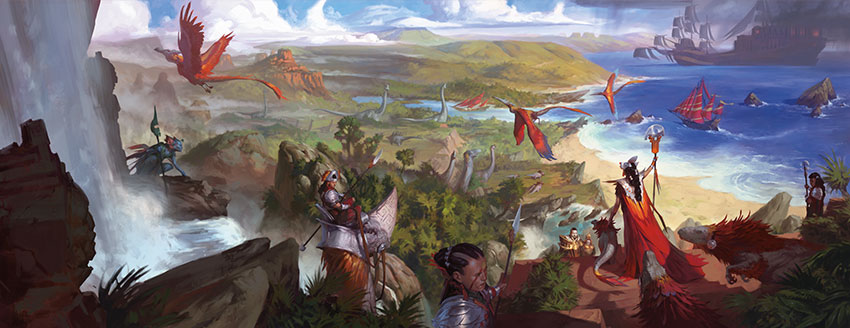
Play Limited Events vs. Buy Packs
As you get more familiar with Arena, you are faced with an interesting question: should you draft more to get the desired cards, or just buy packs?
Do you want to build a certain Standard deck requiring certain cards? Then it’s probably better to buy packs and start looking out for wildcards.
You won’t earn any Wildcards in a draft, but you do keep the cards you pick and can get a great start on building your decks if you find success in a limited event.
Where Will Those Cards and Sets Go When Rotation Hits?
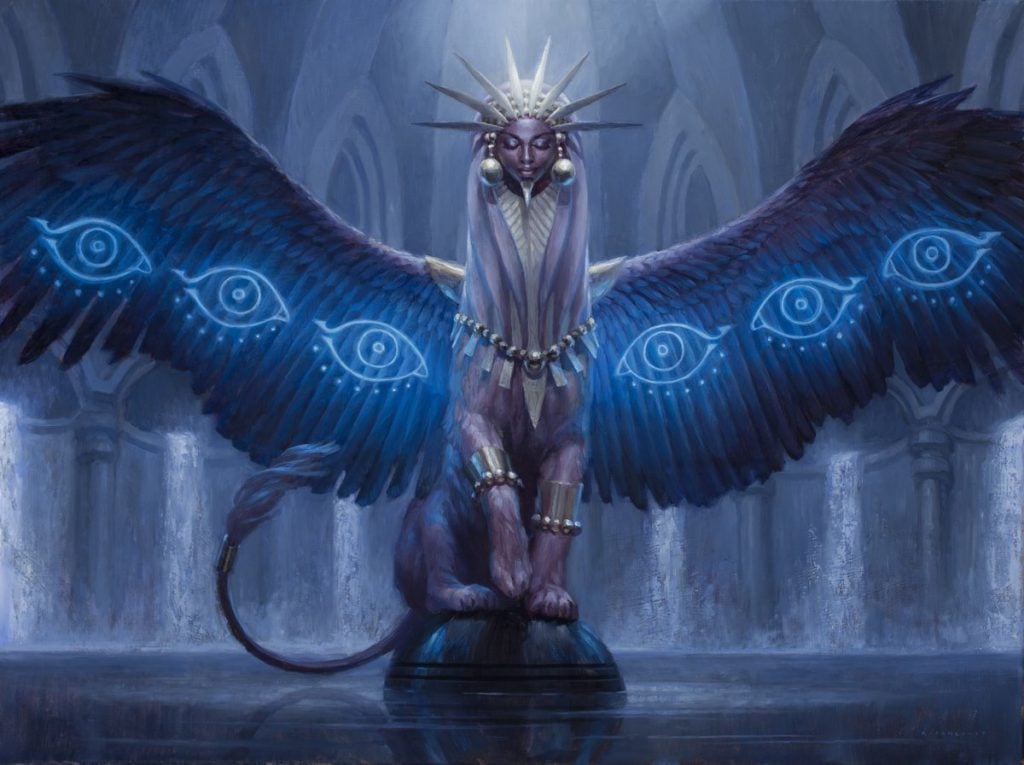
Atemsis, All-Seeing | Illustration by Ryan Pancoast
When Standard and Alchemy rotation occur each fall, a year's worth of cards become playable only in other formats. When you need to get familiar with this, check out our Standard rotation article for the rundown.
An example: in September 2024, Innistrad: Midnight Hunt, Innistrad: Crimson Vow, Kamigawa: Neon Dynasty will rotate out of Standard like they did for Alchemy in September 2023. The cards are no longer available in Standard play on Arena, but they are available for eternal formats like Historic, Historic Brawl, and Timeless.
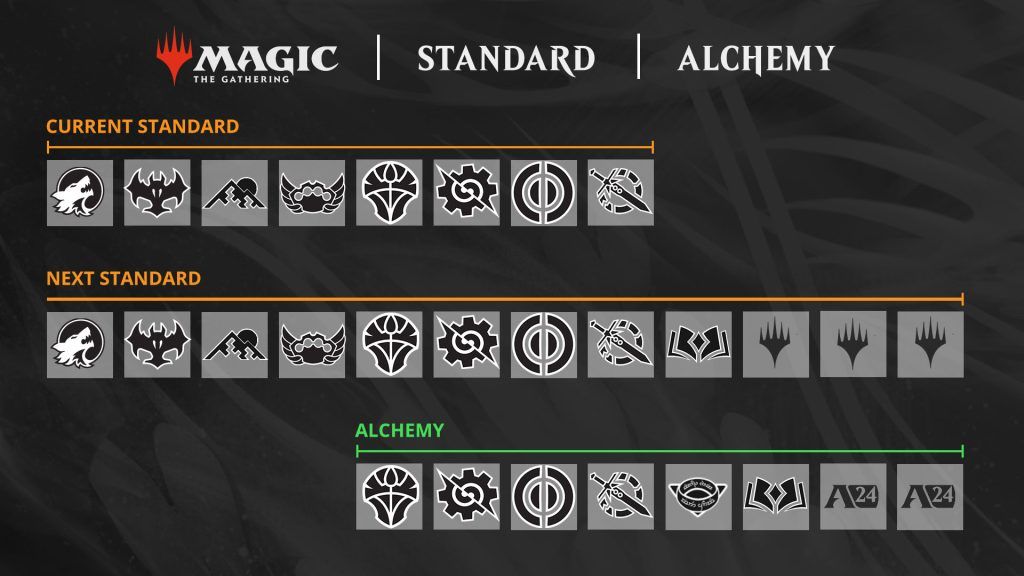
Rebalancing in Limited
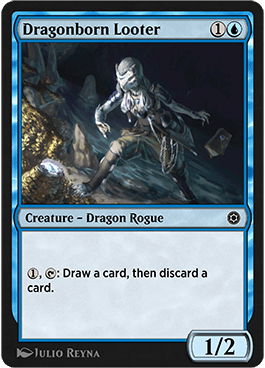
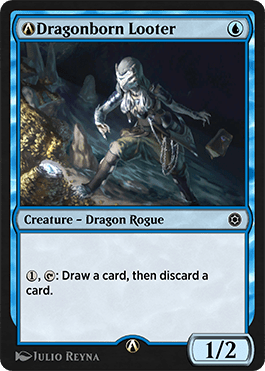
Wizards of the Coast will rarely do limited rebalancing. The change above came to rebalance Dragonborn Looter in Alchemy Horizons: Baldur's Gate, an arena-only set, and only affected limited.
Draft Simulator
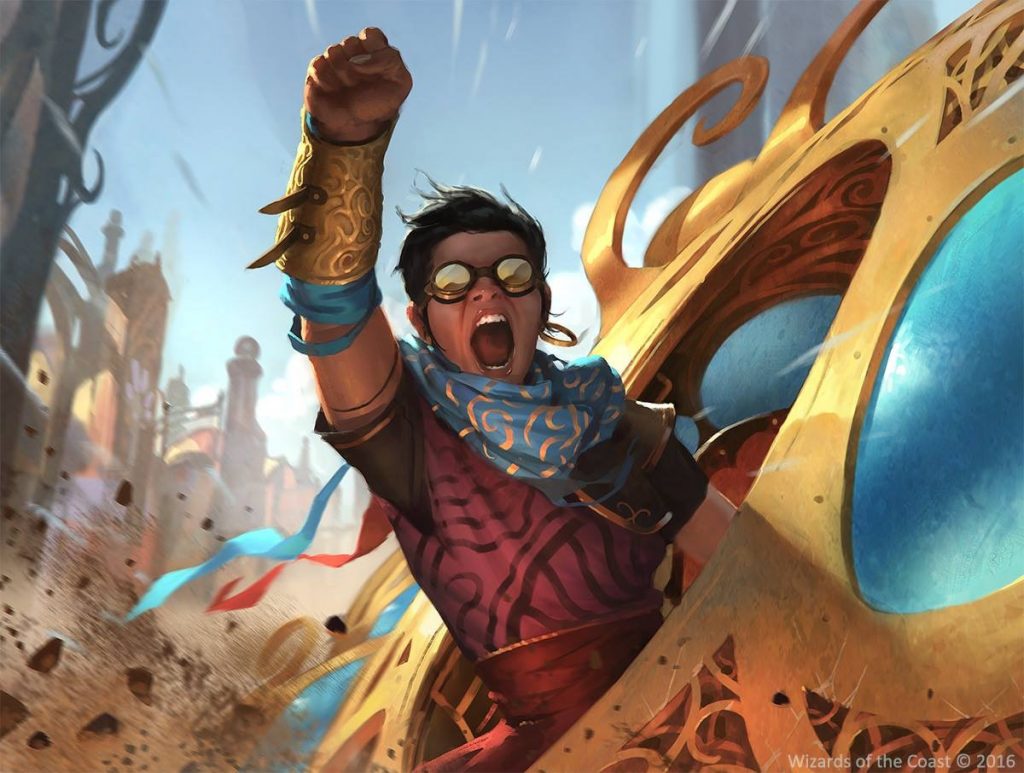
Speedway Fanatic | Illustration by Slawomir Maniak
One of the best things you can do for a draft is practice. Now, I know what you’re thinking, that all costs money! We’re here to tell you that that’s not true. We’ve created a draft simulator that lets you draft all the way back to Dragons of Tarkir.
Not only can you draft as much as you want, but you can also see pick orders and tier lists on our site. This can help you improve both your drafting and decision-making about which cards are the best picks and build-arounds.
Here's a list of Arena sets that are available on Draftsim, a link to simulate drafting each set, and a link where you can see the pick order for each set. May it help you hone your drafting game well!
Current MTGA Standard and Alchemy Sets
Outlaws of Thunder Junction
Draft Outlaws of Thunder Junction (OTJ)
See tier list/pick-order list for Outlaws of Thunder Junction (OTJ)
Murders at Karlov Manor
Draft Murders at Karlov Manor (MKM)
See tier list/pick-order list for Murders at Karlov Manor (MKM)
Full Limited Set Review of Murders at Karlov Manor (MKM)
The Lost Caverns of Ixalan
Draft The Lost Caverns of Ixalan (LCI)
See tier list/pick-order list for The Lost Caverns of Ixalan (LCI)
Full Limited Set Review of The Lost Caverns of Ixalan (LCI)
Wilds of Eldraine
See tier list/pick-order list for Wilds of Eldraine (WOE)
Full Limited Set Review of Wilds of Eldraine (WOE)
March of the Machine
Draft March of the Machine (MOM)
See tier list/pick-order for March of the Machine (MOM)
Full Limited Set Review of March of the Machine (MOM)
Phyrexia: All Will Be One
Draft Phyrexia: All Will Be One (ONE)
See tier list/pick-order for Phyrexia: All Will Be One (ONE)
Full Limited Set Review of Phyrexia: All Will Be One (ONE)
ONE Ultimate Draft Guide
The Brothers' War (BRO)
Draft The Brothers' War (BRO)
See tier list/pick-order for The Brothers' War (BRO)
Full Limited Set Review of The Brothers' War (BRO)
BRO Ultimate Draft Guide
Dominaria United (DMU)
Draft Dominaria United (DMU)
See tier list/pick-order for Dominaria United (DMU)
Full Limited set review for Dominaria United (DMU)
DMU Ultimate Draft Guide
Alchemy Horizons: Baldur's Gate (HBG)
Draft Alchemy Horizons: Baldur's Gate (HBG)
See tier list/pick-order for Alchemy Horizons: Baldur's Gate (HBG)
HBG Ultimate Draft Guide
Streets of New Capenna (SNC)
Draft Streets of New Capenna (SNC)
See tier list/pick-order for Streets of New Capenna (SNC)
Full Limited set review of Streets of New Capenna (SNC)
SNC Ultimate Draft Guide
Kamigawa: Neon Dynasty (NEO)
Draft Kamigawa: Neon Dynasty (NEO)
See tier list/pick-order for Kamigawa: Neon Dynasty (NEO)
Full Limited set review of Kamigawa: Neon Dynasty (NEO)
NEO Ultimate Draft Guide
Innistrad: Crimson Vow (VOW)
Draft Innistrad: Crimson Vow (VOW)
See tier list/pick-order for Innistrad: Crimson Vow (VOW)
Full Limited set review of Innistrad: Crimson Vow (VOW)
VOW Ultimate Draft Guide
Innistrad: Midnight Hunt (MID)
Draft Innistrad: Midnight Hunt (MID)
See tier list/pick-order for Innistrad: Midnight Hunt (MID)
Full Limited set review of Innistrad: Midnight Hunt (MID)
Older “Historic” Sets
Khans of Tarkir
See tier list/pick-order list for Khans of Tarkir (KTK)
D&D: Adventures in the Forgotten Realms (AFR)
Draft D&D: Adventures in the Forgotten Realms (AFR)
See tier list/pick-order for D&D: Adventures in the Forgotten Realms (AFR)
Strixhaven: School of Mages (STX)
Draft Strixhaven: School of Mages (STX)
See tier list/pick-order for Strixhaven: School of Mages (STX)
Kaldheim (KHM)
See tier list/pick-order for Kaldheim (KHM)
Zendikar Rising (ZNR)
See tier list/pick-order for Zendikar Rising (ZNR)
Core Set 2021 (M21)
See tier list/pick-order list for Core Set 2021 (M21)
Ikoria: Lair of Behemoths (IKO)
Draft Ikoria: Lair of Behemoths (IKO)
See tier list/pick-order for Ikoria: Lair of Behemoths (IKO)
Theros Beyond Death (THB)
Draft Theros Beyond Death (THB)
See tier list/pick-order for Theros Beyond Death (THB)
Throne of Eldraine (ELD)
Draft Throne of Eldraine (ELD)
See tier list/pick-order for Throne of Eldraine (ELD)
Core Set 2020 (M20)
Draft Core Set 2020 (M20)
See tier list/pick-order for Core Set 2020 (M20)
War of the Spark (WAR)
Draft War of the Spark (WAR)
See tier list/pick-order for War of the Spark (WAR)
Ravnica Allegiance (RNA)
Draft Ravnica Allegiance (RNA)
See tier list/pick-order for Ravnica Allegiance (RNA)
Guilds of Ravnica (GRN)
Draft Guilds of Ravnica (GRN)
See tier list/pick-order for Guilds of Ravnica (GRN)
Core Set 2019 (M19)
Draft Core Set 2019 (M19)
See tier list/pick-order for Core Set 2019 (M19)
Dominaria (DOM)
Draft Dominaria (DOM)
See tier list/pick-order for Dominaria (DOM)
Rivals of Ixalan (RIX)
Draft Rivals of Ixalan (RIX)
See tier list/pick-order for Rivals of Ixalan (RIX)
Ixalan (XLN)
Draft Ixalan (XLN)
See tier list/pick-order for Ixalan (XLN)
Draftsim also has an extensive library of (very fun) older sets that were released long before Arena was created. You can check out the complete set listing.
Arena Draft Helper
Another great tool to use is a draft assistant for Arena. These are mostly fan-made trackers obtained from in-game logs and external sources. They can help you get more insight into drafting, what choices to make, and become a better player overall.
Of course, we're not exactly impartial, but we say that the best one you can integrate into Arena is Draftsim's own Arena Tutor. It's easy to use, turn on or off, and, best of all, it uses Draftsim's ratings to dynamically guide your picks based on what you've already drafted! It's a great tool to have on during drafting and enables you to make better picks from your packs.
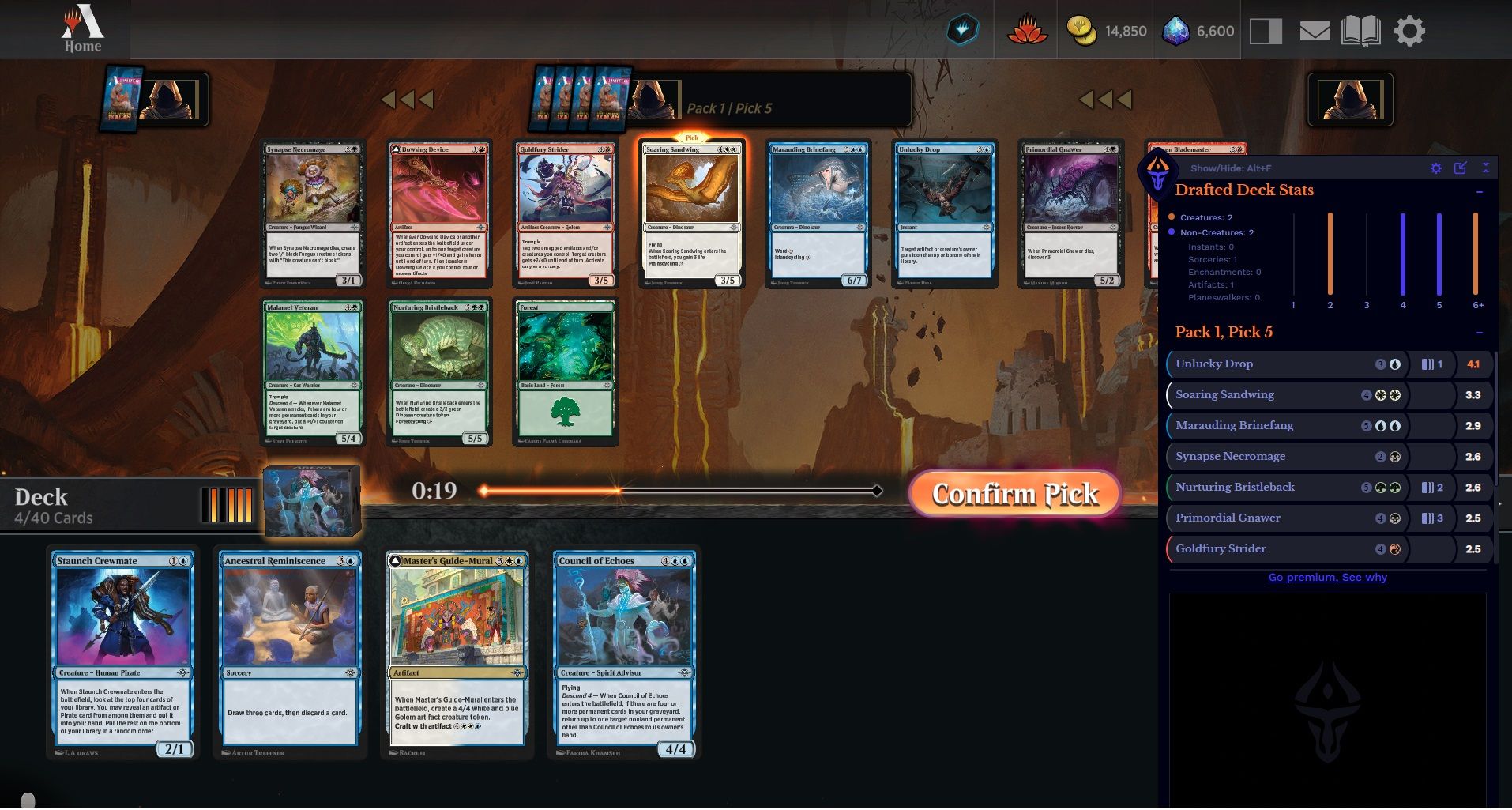
An Arena draft using Arena Tutor
If you want some more help grasping the basics of Magic, you can also check out the Codex of the Multiverse (book icon) section of Arena itself. It gives you links to great articles especially written for beginning players and can help you get your head around the great game that is Magic.
How Can I Improve at Limited?
Improve your Limited skills by increasing your knowledge. There are also a couple of great sites to check out and keep on the lookout for whenever a new set releases. These are articles on draft picks and set reviews. Some of my personal favorites come from Channel Fireball. The LSV limited set reviews are a great jumping off point for getting into a new set and can give you an easy and well thought-out first look of newly printed cards.
When it comes to draft picks, I’m very much into Frank Karsten’s articles. His latest can be found at ChannelFireball. He uses a lot of information from other sites, including our own, to make a great pick-order and tier guide. Like our own pick order and tier guides, this can really help you get to know top cards quickly.
As the format develops and people discover deeper draft strategies, Ryan Saxe's articles on Star City Games are an excellent place to go to get cutting edge draft tech and analysis.
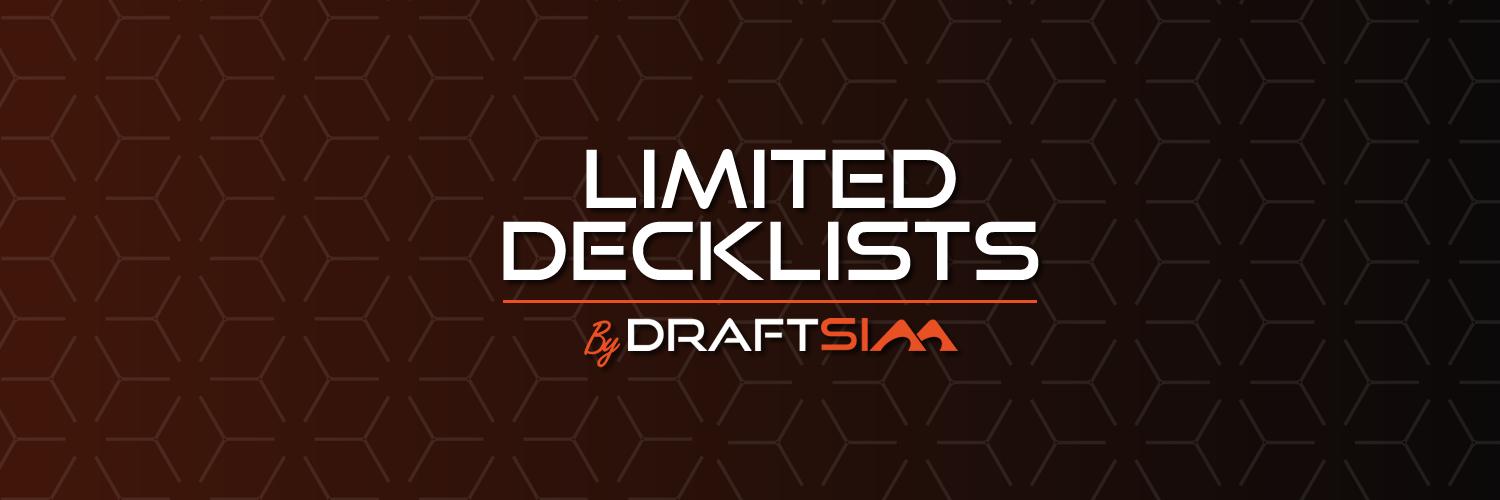
If you want improve both your drafting and deck building, check out Draftsim's Twitter account, Limited Decklists. The account shares undefeated Draft and Sealed lists from some of the best—and most hardcore—drafters in the world every day. Many people also include their Draft logs so you can follow along pick-by-pick to see what you would have drafted yourself.
Last but not least, we want to touch up on watching other greats in the Draft game. This can also be a great tool in helping you become a better drafter as you can see what the pros pick and usually find out why. Follow MTG streams on Twitch or YouTube channels like Channel Fireball, Magic the Gathering, Ben Stark, and Magic: the Gathering Esports to find great content on Arena drafts to continually up your game.
Speaking of Ben Stark, if you are really serious about getting better about limited, he has a comprehensive course on the topic at Spikes Academy. You should definitely check it out if you want focused content to help you improve.
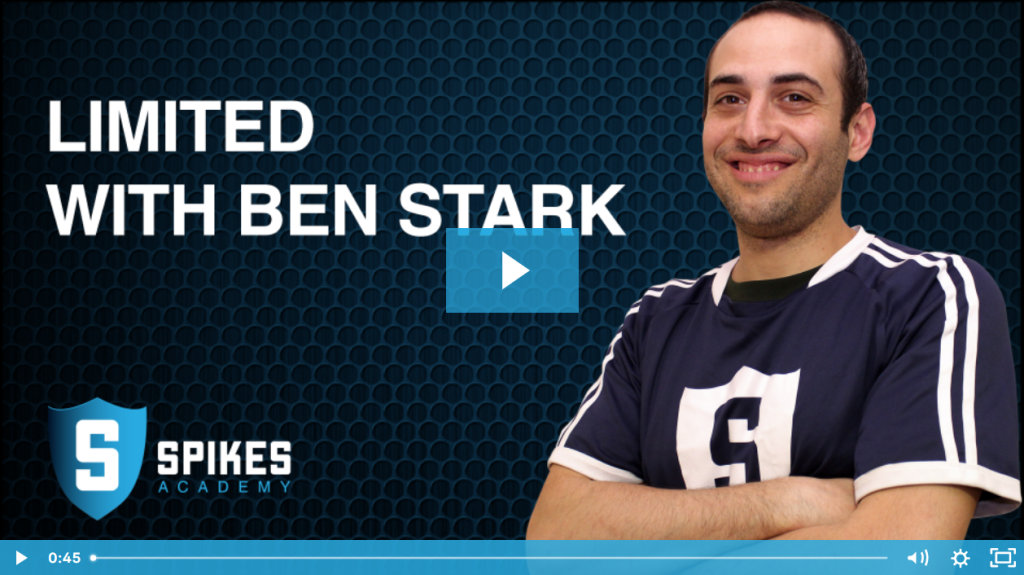
Be sure to check out if your favorite players have channels out there that talk about drafting on Arena. If it’s a person you love to see play, you can pick up a lot of things from them on how to get better by watching them do their thing on their channel. Keep exploring and you’ll find there is a lot out there to help you become the best you can be.
Time for the Last Pick
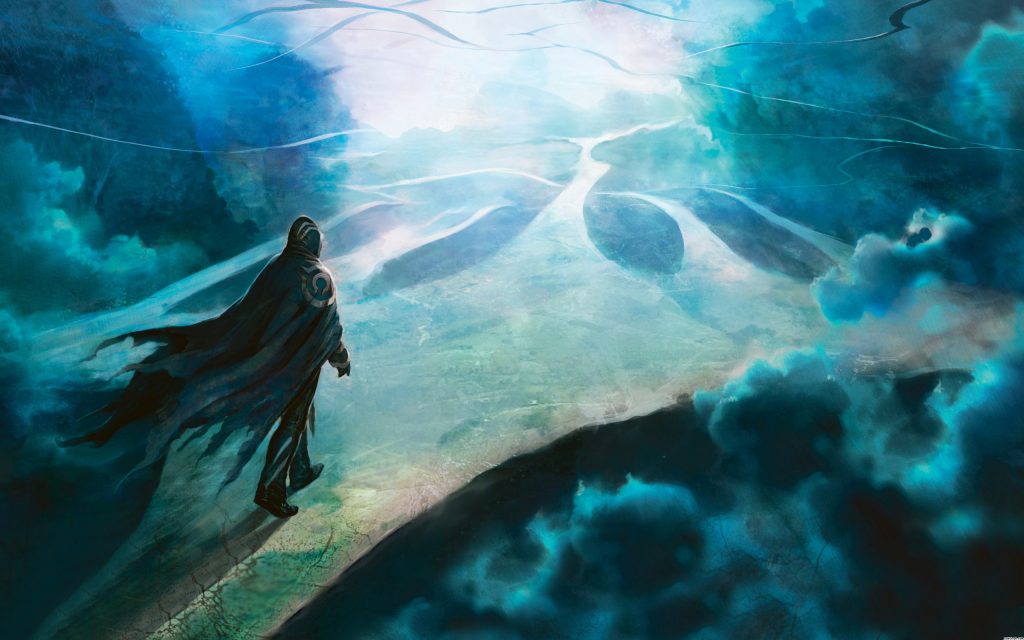
Omniscience | Illustration by Jason Chan
With that, we've come to the end of our guide to make you a better drafter on MTG Arena. Keep an eye out for fun draft variants like Turbo Draft that will shake up the lessons you learned today. We hope you enjoyed the read and, most of all, found it helpful.
If you like this guide and our website and would like to see more epic content like this in the future, you can support us on Patreon. We appreciate it a ton, because there’s nothing we like more than providing you with great articles and software for the game we all love to play.
See you next time!
Follow Draftsim for awesome articles and set updates: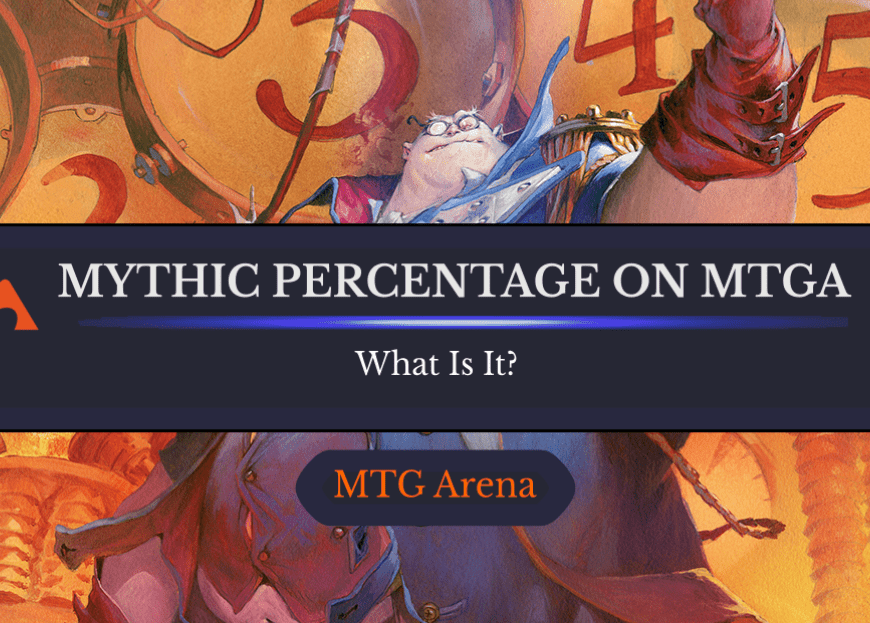
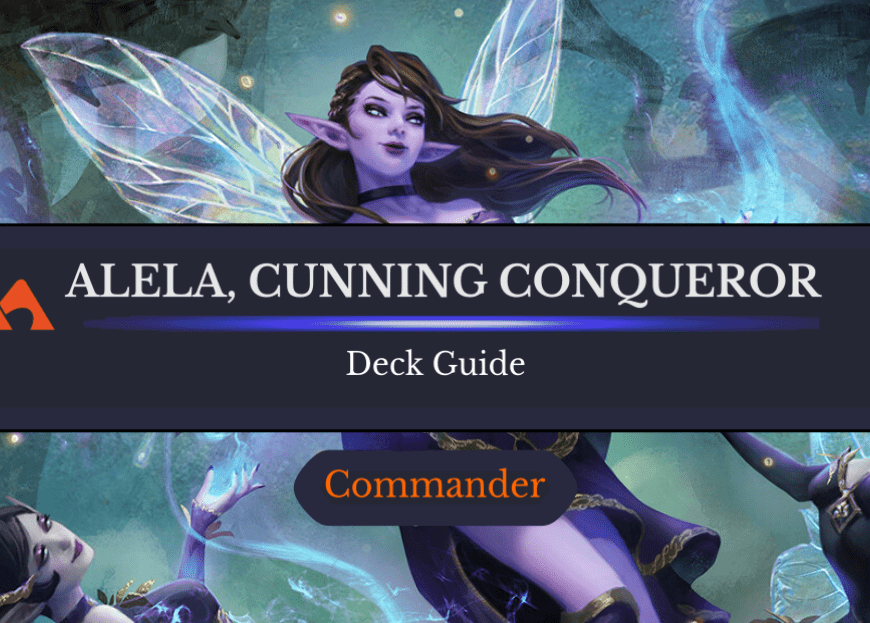
6 Comments
Okay, am I the worst draft player in M:tG history, or just the unluckiest? I’ve played several drafts with the guide of the Arena Tutor. I am winless in 3 or 4 recent events. Is your software working properly? If so, what the heck am I doing wrong?
Drafting is very difficult! Getting good at draft is a lifelong pursuit — I recommend joining our Discord to get feedback on your decks, reading articles, and listening to podcasts.
To get good, you have to work at it!
Thanks, Dan. I’ll need to find Discord groups.
Watch youtube videos of other people drafting. You’ll get a good sense of what good cards and archetypes are and then emulate that. Eventually you’ll be flying with the drafts.
“On Arena you draft against bots, just like on Draftsim. The MTGA bots are patient and don’t mind waiting. They have nowhere to go anyway, so there is no time limit. Read the cards or read a book, it doesn’t matter. When you’re ready to make your pick, the bot will still be there waiting. This gives you a great opportunity to look through the cards you’ve picked, check for synergies, and weigh your options, so take advantage of it and take your time.”
This is incorrect, you in fact draft against real people on a time limit that shrinks after each pick so it gets nerve wracking. I went in expecting to take my time and consult this and other sites for my picks. This was very disappointing.
This particular section was outdated, so I’ve updated it based on your feedback. For what its worth, the other sections were very explicit that Quick draft is with bots while Traditional/Premier draft are with humans. Also if you’re looking for recommendations on your picks instantly in game while you’re drafting with humans, I really recommend using our app Arena Tutor. It will do this for you! That way you don’t have to check card ratings in the middle of the draft.
Add Comment